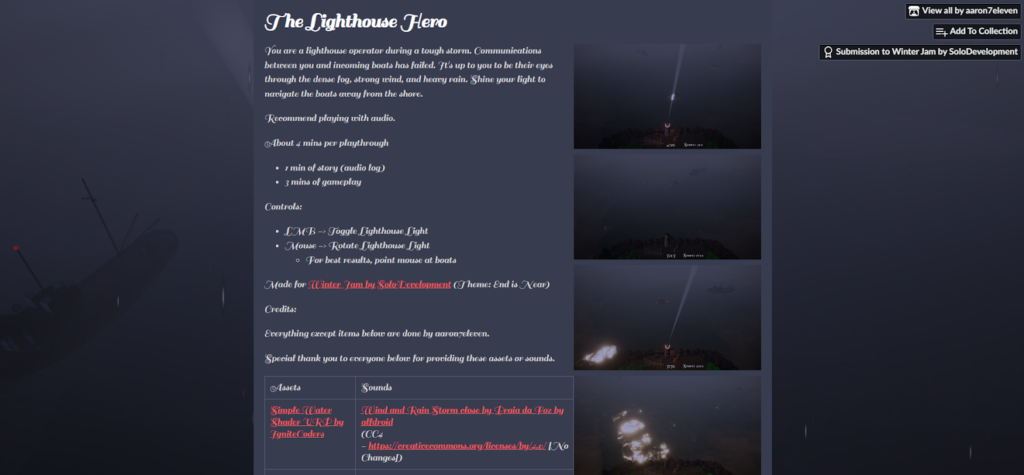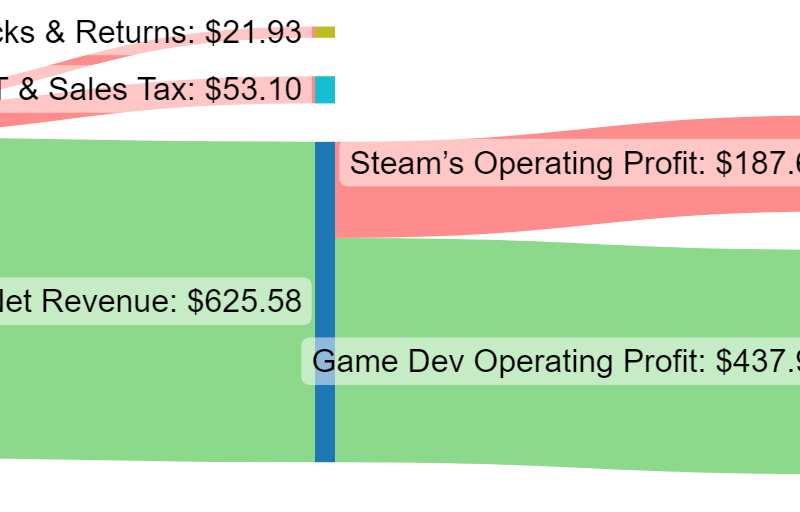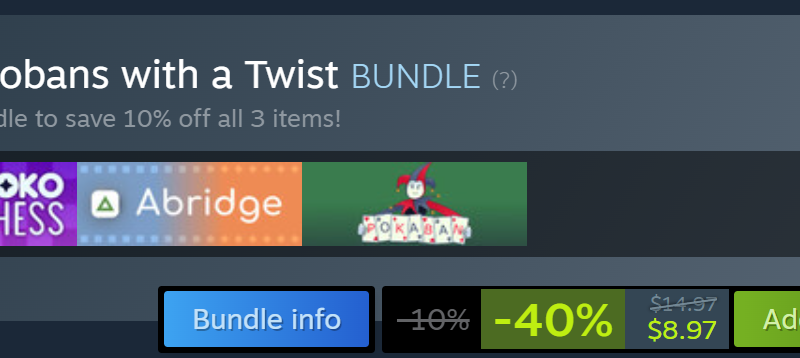If you’re a new, beginner, or intermediate game dev looking for game jam tips? This post is for you.
These are 27 tips I’ve learned from my game jam experience. These tips can be applied to jam games and big projects using any game engine.
Let’s jump right into it.
1 – Use previous software versions
Don’t use the latest and greatest version of game engines or libraries. Two reasons: bugs and software compatibility.
Game engines and libraries aren’t perfect. Using the latest version might squash some bugs. But, it could also create more. If you run into issues, it’s much easier to move to a new version than revert to a previous version.
One time, Unity wouldn’t export my jam game. I downloaded a later version. Tried again and it worked like a charm.
Another reason is software compatibility. Not all premade assets maintain compatibility with the latest version. Blocking the chances of using it. This can be disheartening when you locate that perfect asset only to find out that you can’t use it. It might work if you try it out. You are taking on all the risk and burden, which defeats the purpose of the asset. Using a matured version of your specific software gives you the best chance to do what you want, make games.
The solution? Use versions that have long term support.
For example, Unity has a Long Term Support (or LTS) version. They are committing to maintaining it for 2 years (Source). It’s Win-Win-Win for game dev’s, asset creators, and Unity. For game devs, they know they are getting a software version with consistent quality. For asset creators, they have confidence knowing they can offer and sell a product that works. For Unity, they have devs using their engine.
Time is precious in a game jam. Don’t waste it trying to fix software issues outside your control.
2 – Know your licenses
Everything has a license…Everything. Double check it when using any asset that is not your own.
Assets usually have Creative Commons (CC) License. By asset, I am mean (but not limited to), music, sounds, images, models, etc. Use CC0 (i.e. public domain) where you can. Otherwise, follow the license (CC or whatever it has).
Look to get assets from reputable sources. Sources like game engine assets stores or online repositories like Kenny, are great. I wouldn’t recommend using anything without a license associated with it.
Software licensing, specifically Free and Open Source Software (FOSS) licensing, is similar. By software, I mean the actual source code and the rights it has. Read up here on which ones you can use and what you can actually do with them. MIT license is a common one that is good to use.
Not following licenses could lead to bigger consequences. Don’t risk it. Know what you can and can not do with them.
3 – Know the game jam rules
Know the logistics of the jam. What you can do and what you cannot. Do this before the jam even starts. It’s better to know now if you can’t do something now rather than before starting to build it. Worse case, if you find out right before submitting it.
For example,
- When is the start time and deadline?
- Can I work on teams?
- Do I have to make everything from scratch?
- What assets, game engine, and libraries can I use?
4 – Have a goal
Strive to learn new skills, tools, or try something new. Don’t be afraid to take a little risk. Write down it when you have.
For Unfold, I wanted to build a browser game with an isometric view.
For Pay Respects, I wanted to build a game around Unity’s Terrain Tool.
For The Lighthouse Hero, I wanted to learn more about raycasts and build a game around that.
Doesn’t have to be a big goal. But have something in mind and push yourself.
5 – Be Human
Sleep, eat, take breaks, go for walks.
Don’t ignore them. You’ll feel better, be more productive, and have more fun. Resulting in a better game.
6 – Be honest with yourself and abilities
Know your strengths and weaknesses. Know what you can do and can’t. Know what you like to do and what you don’t like to do.
If you don’t know, think about it. Don’t want to overextend yourself.
7 – Make a plan
Before the game jam starts, breakdown what you are doing to do and when you are doing to do.
Incorporate the tips above too. When are you going to sleep, eat, and take breaks? If your goal is to learn more about art, schedule more time for art.
Here was my plan for The Lighthouse Hero.
8 – Make a finishable game
Sounds obvious right. But, scope creep is one of the biggest contributors to not finishing. Don’t let it happen by having a game with so many mechanics, art, sounds, effects, etc. It’s going to be unplayable or feel incomplete.
Keep it simple with what you know you can do using your skill set and tools. Planning ahead gives you a guideline of what you need to do to finish the game on-time.
9 – Use previous or existing game ideas
Finding a game idea is one of the hardest things in a game jam. Spending too much time brainstorming is detrimental and frustrating. If you can’t come up with an idea, “borrow” someone else.
There’s no shame taking bits and pieces of a game you like and trying to replicate that. If you don’t want to do this, keep a journal of game ideas, themes and mechanics.
When the jam starts, look at your list and think how you could incorporate the theme into them. It’s much easier to pick from a list you’ve built over time than to come up with a list on the spot.
10 – Make the core gameplay loop as fast as possible
Establish the flow of the game and build it fast. Spending too much time tweaking systems, components, “experimenting” is detrimental.
Completing this first puts the game into perspective. Let’s you know what you need to focus on compared to what you think you need to focus on.
11 – Keep it simple
No one wants an complicated game that doesn’t tell them how to play. It’s not a good use of your time or players. The best games are simple, understandable and to the point. Have 1 or 2 core game mechanics and put all your effort into those.
12 – Keep it short
Shoot for 5-15 mins long. Players don’t want to play jam games that are too long. They either don’t have the free time or want to play other jam games. They want an experience that they can hop in, enjoy and hop out of.
Estimating playtime is difficult. Vimlark has a pretty good rule of thumb for estimating it. He takes his fastest time to complete the game and multiplies it by 3. The result is an average playtime for a first time player.
13 – Focus on quality over quantity
Polish and iterate on those core mechanics. Squeeze all you can out of them. Be almost obsessive about it. Adding too many features leads to scope creep. We don’t want this. It leads to a half-baked game that no one will want to play.
14 – Use assets, resources and references
Don’t be afraid to use pre-made assets, resources like tutorials, and references to other games or for art. They save time, effort and give better results than what you could on your own
It feels like cheating. But, it’s not. Everyone does it. They don’t tell you. 😉
There’s also an added benefit of learning how to incorporate other people’s work into a project.
I put together a list of links to assets, sounds, and tutorials I’ve used on my website. Check it out here.
15 – Give in-game feedback
Everything should have feedback. This is one of the most underrepresented items in jam games, in my experience.
Mouse hovers over UI Button. Play mouse hover sounds and animation.
Player hits the enemy. Play hit sounds. Flash enemy’s color. Show the player swinging their weapon. Update enemy health bar. Emit particles. Shake camera.
Player can’t do action X. Alert players why they cannot.
Players aren’t mind readers. Feedback gives them the information to understand what is going on. It then lets them decide what they can do next. Leaving items like this up to chance, doesn’t provide a good experience.
16 – Easier difficulty is better than harder difficulty
Making a game that is too difficult leaves a bad impression. Players won’t complete it. They feel it’s too unfair. They’ll get upset. Leave a subpar review.
Making it easier than you think. If it feels too easy for you, it’s about the right difficulty for a new player.
17 – Playtest, Playtest, Playtest
Playtest as much as you can manage. Set time aside to do it. Ask people to play your game and ask for feedback. The more specific feedback you ask for, the better the feedback you’ll receive.
18 – Make a tutorial
Don’t expect players to know how to play your game or try to “spark their curiosity” to learn it.
Jam games are not 100 hrs JRPG’s that you can sink your teeth into and chew on those juicy pieces of lore.
It’s not respecting the player’s limited time and attention. Putting instructions in a wall of text or on the game jam page (like on itch.io) are fail safes, not solutions.
Make clear and concise instructions in the game to teach players how to play. A to Jump. WASD to move. The more interactive and discrete they can be, the better.
19 – Don’t forget about sound
Usually the first thing dropped in a jam game is sound. By sound, I mean, sound FX, music, and voice recordings.
It does a lot more than you think. When done right , it acts as a multiplier on the player’s experience. It provides depth and builds another layer of immersion.
Keep in mind that the same happens in reverse too. Bad sounds can ruin a great game.
My rule of thumb: Great Sound > Ok sound > No sound > Bad sound.
Give it some thought during the polish stage.
20 – Don’t sleep on the submission page and screenshots
”Players play with their eyes long before they play the game.” – Gabriel Dal Santo (aka Pro Indie Dev) in FGGS training
Set aside a little time to put together a nice game page. Grab some decent screenshots and capsule images. It will pay dividends to make your game more appealing.
Graphics aren’t everything. But, they do influence a player’s willingness to want to play.
Which would you play?


21 – Build game for as many players as you can
Jam games come in two different flavors: in browsers or as a downloadable for a target OS.
Browser games are excellent for jams. Easy to play. Reduces the player friction, time, and effort from getting to the game’s page to playing the game. I’ve observed that these get more plays and reviews than a downloadable.
The alternative is downloadable games. Make executable for every popular OS platform (Windows, MacOS, and Linux). Don’t limit players based on what OS they prefer to use. Give them instructions on starting the game.
Upload games as .zip’s. It’s supported on each popular OS. Uploading them as .rar’s, .7z’s, or a .tar.gz adds another hurdle in the player’s way to play the game.
22 – Submit early
Don’t wait until the last minute to submit your game. It’s the worst feeling to miss the submission deadline. It can feel like the time was “wasted” (sidebar: It’s not. Don’t think like this. Publish the game anyway. Learn from experience. Move on. You will be a better dev because of it.)
Shooting for 30 mins to an hour before. Last minute things will come up. Don’t let them interfere.
For example, it takes time to build the game for all the platforms you want and upload it (between 10-30 mins). Multitask by taking this time to build the jam page for the game.
23 – Be retrospective
One way to get better is to measure your progress and write down your learnings.
Ask yourself questions about the game jam experience and try to answer them. For instance:
- What went well and what didn’t?
- Where could you have done better?
- Where did you struggle?
- Was the game what you expected it to be? Why or why not?
- What would have been nice to know before the jam?
- If you had a goal,
- Did you do it?
- Why or why not?
- If you had a plan,
- How well did you follow it?
- How would you improve it for next time?
Take the learnings and work them back into your workflow to make better games.
24 – Play other jam games
Once the game jam finishes, play other games. See how they approached the theme, their game and game jam.
Is there anything you can learn from them? Jot down notes of things you liked and didn’t like about it. What did it do well? What could improve?
Don’t forget to have fun playing them of course! 😁
25 – Give feedback
Once you play other games, let them know what you think of it. It’s always nice to hear from players. Even better if you provide constructive criticism. At the least, leave a nice note about something you liked about it. As usual, don’t spam people or be mean. It doesn’t help anyone, even yourself.
Pro tip: On itch.io when you leave a comment, the game developer gets notification that you left a comment. If they go read it, it shows your comment along with your name and game you made for the jam. Decent way to share the word about your game and help others. It’s a Win-Win!
26 – Apply feedback given
If you get feedback from players and are able to apply it to your game, do it fast as you can.
It’s a skill to be able to listen and apply what they are saying. If you need clarification on a comment, ask them. Don’t assume. Also, don’t jump into why you did it X way. It comes off as defensive.
Players will feel heard and appreciated when you do it. It builds trust between you and them. Makes your game better in ways you didn’t think of.
When you add it into the game, be sure to tell them too. Could even think about adding them to credits.
27 – Share your experience and learnings
Game dev’s love learning how they could become better. You are doing it right now. Share your experience and what you learned.
It helps others like it’s helping you. Except they didn’t have to put the time and effort into it. This means the information and learning you have is valuable for that reason.
Doesn’t matter how you share it. Twitter. Reddit. Blog. YouTube. YouTube Short. TikTok or whatever. Put it out there. Helps start to build a community too.
Best way to learn is to teach and help others.
Closing Comments
Phew…That’s it! Thanks for getting this far! I’ve found the best result when I’ve made a plan and had a goal. To be clear, you don’t have to do all of them. Pick and choose which ones you want to focus on and go from there. Keep these tips in your back pocket. Reference them when you are looking to grow.
But, let’s start the last tip now!
What you learned from your last game jam? Did I miss any tips?
Feel free share and check out my other blogs on my website: https://eventidegamesstudio.com/blog/
Cheers! Have a great day!




